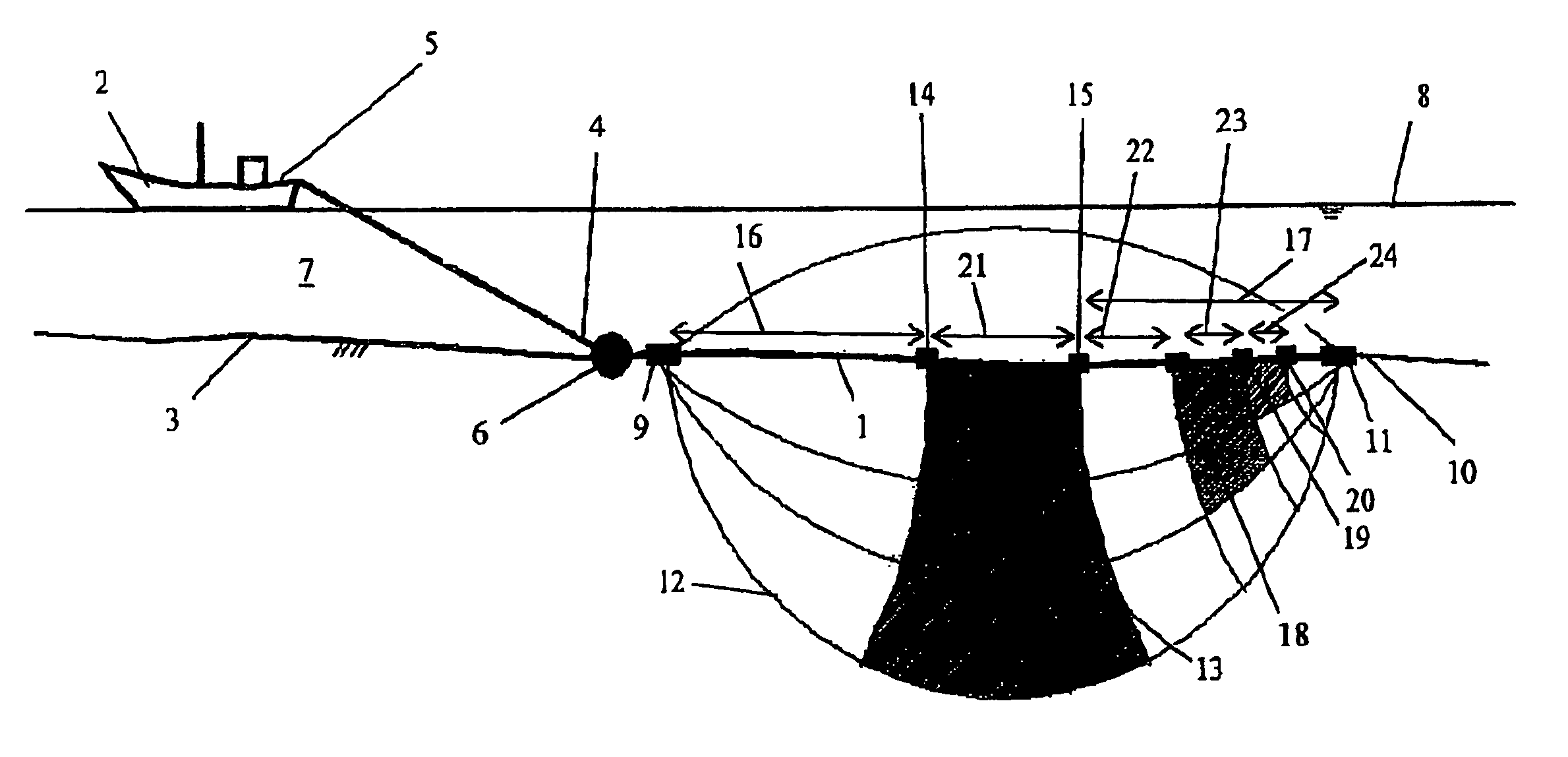Electrode configuration for resistivity sounding
a resistivity and sounding technology, applied in the field of resistivity surveys, can solve the problems of less successful applications on water, less suitable applications involving inversion of apparent resistivity data into true resistivity depth sections, and the electrical gradient cannot be considered linear, so as to reduce the noise level
- Summary
- Abstract
- Description
- Claims
- Application Information
AI Technical Summary
Benefits of technology
Problems solved by technology
Method used
Image
Examples
Embodiment Construction
[0022]The invention relates to a method for measuring high quality apparent resistivities of water covered subsurfaces which can be used for inversion into true vertical depth sections.
[0023]Resistivity of the upper soils of a water bed is determined by measuring a voltage gradient associated with an electrical field of an electrical current that is injected into the subsurface.
[0024]To this end, a substantially flexible multi-channel cable 1 with an array of electrodes, according to an embodiment of the invention, is towed by a survey vessel 2 along the water covered subsurface 3 as represented schematically in FIG. 1. This water covered subsurface or water bed 3 can be for instance a sea bed or river bed.
[0025]The electrodes are arranged separated from each other in the following fixed order from a first end 4 towards a second end 10 of the cable 1: (i) a first current electrode 9, (ii) a first voltage electrode 14, (iii) a second voltage electrode 15, (iv) a third voltage electro...
PUM
 Login to View More
Login to View More Abstract
Description
Claims
Application Information
 Login to View More
Login to View More - R&D
- Intellectual Property
- Life Sciences
- Materials
- Tech Scout
- Unparalleled Data Quality
- Higher Quality Content
- 60% Fewer Hallucinations
Browse by: Latest US Patents, China's latest patents, Technical Efficacy Thesaurus, Application Domain, Technology Topic, Popular Technical Reports.
© 2025 PatSnap. All rights reserved.Legal|Privacy policy|Modern Slavery Act Transparency Statement|Sitemap|About US| Contact US: help@patsnap.com


